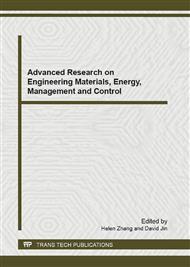p.654
p.660
p.665
p.669
p.676
p.680
p.693
p.697
p.701
Vascular Contour Extraction of MRS Regional Morphology Algorithm Based on Sobel Operator
Abstract:
Through the study of the traditional vascular contour extraction algorithm, in this paper the means that vascular contour extraction of MRS regional morphology algorithm based on Sobel Operator is proposed. This method comprehensively applying regional growth algorithm and morphologic detection algorithm, and combining with Sobel operator through the correction and contrast enhanced, the result of vascular contour is more accurate and more continuous on this basis, which plays a decisive role. Experiments show that this method not only can effectively extract vascular outline and vascular contour positioning accuracy is higher, but also can effectively reduce the interference of noise to the image , Thereby this method improve the anti-interference ability of contour extraction for image
Info:
Periodical:
Pages:
676-679
Citation:
Online since:
January 2012
Authors:
Price:
Сopyright:
© 2012 Trans Tech Publications Ltd. All Rights Reserved
Share:
Citation:


